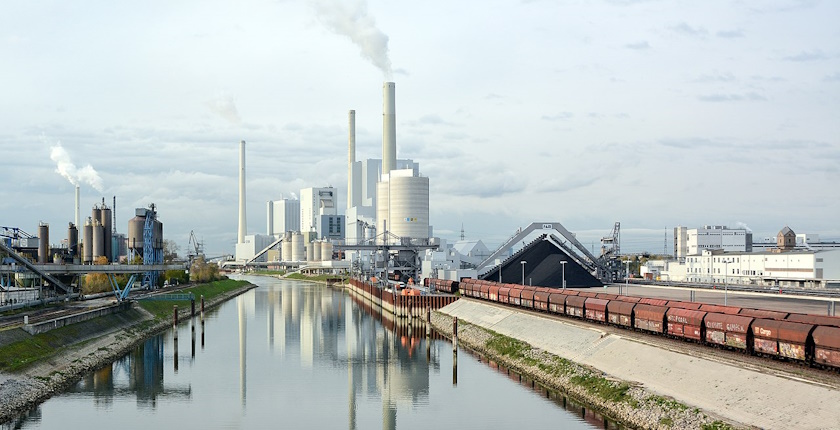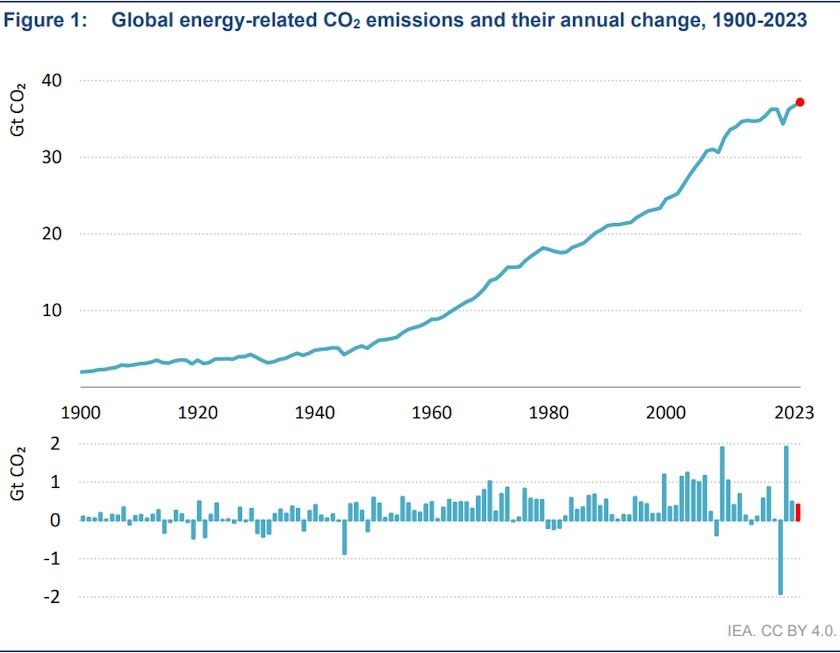
Photo: Hubert Berberich (HubiB) / https://creativecommons.org/licenses/by/3.0/legalcode.en
Droughts limited hydropower production last year across the planet, so fossil sources covered the shortfall to a large extent, the International Energy Agency said. It led energy sector greenhouse gas emissions to a record high. The level is steadily rising, as is the concentration of carbon dioxide in the atmosphere. Global warming is still accelerating.
Energy sector greenhouse gas emissions rose by 1.1% to 37.4 billion tons in 2023, IEA said. Since the end of World War Two, they fell only seven times, amid recessions: in 1949, 1980, 1981, 1982, 2009, 2015 and 2020.
The organization attributed 40% of last year’s jump to exceptional droughts as they hit hydropower. Conversely, it said that the expansion of technologies such as solar, wind and electric vehicles resulted in a smaller increase in emissions than in the previous year, given that total energy demand growth accelerated.

Clean energy prevented two thirds of potential emission increase since 2019
Without clean energy technologies, the global increase in CO2 emissions in the last five years would have been three times larger, the annual report shows. From 2019 to 2023, energy-related emissions increased by around 900 million tonnes. In developed economies, they fell at a record pace to a 50-year low due to the coal phaseout.
The decline in advanced economies’ emissions was driven by a combination of strong renewables deployment, coal-to-gas switching, energy efficiency improvements and softer industrial production. Last year was the first in which at least half of electricity generation in advanced economies came from low-emissions sources like renewables and nuclear.
The coal phaseout slashed energy sector emissions to a 50-year low in developed economies
“The clean energy transition has undergone a series of stress tests in the last five years – and it has demonstrated its resilience. A pandemic, an energy crisis and geopolitical instability all had the potential to derail efforts to build cleaner and more secure energy systems. Instead, we’ve seen the opposite in many economies,” said the IEA’s Executive Director Fatih Birol.
The deployment of wind power and photovoltaics in electricity systems worldwide since 2019 has been sufficient to avoid an amount of annual coal consumption equivalent to that of India and Indonesia’s electricity sectors combined – and to dent annual natural gas demand by an amount equivalent to Russia’s pre-war natural gas exports to the European Union, the report reads.
Earth to keep warming for at least as long as there are any net emissions
Nevertheless, the concentration of greenhouse gases in the atmosphere keeps rising steadily and accelerating climate change. It takes hundreds or even thousands of years for CO2 to break down. Methane stays for only a few decades, but its so-called global warming potential, a 100-year measure, is up to 30 times higher than CO2.
The level of carbon dioxide in the atmosphere reached a record 424 parts per million last May, the usual peak month every calendar year. The 12-month average climbed to 419 parts per million in December or 2.4 more than one year before.
Global average temperature has been breaking records for every month since May 2023. As for sea temperature, the trend is very similar. The mass and coverage of ice on water and land is dwindling.
Global warming has been higher than 1.5 degrees Celsius for one whole year now
The European Union’s Copernicus Climate Change Service (C3S) said that January marked the end of the first 12-month period so far with an average global temperature higher than the 1.5-degree Celsius above the preindustrial reference period. The threshold was established in the 2015 Paris Agreement. Set for the year 2100, the goal seems to have been too ambitious as global efforts in the meantime to eliminate net greenhouse gas emissions were insufficient.
In theory, the direction could reverse and offset the breach. But every fraction of a degree higher exacerbates the risk of extreme weather events and the extinction of species. In practice, not only would net emissions have to be rapidly reduced to avoid catastrophic scenarios – they must turn negative as quickly as possible.


















Be the first one to comment on this article.